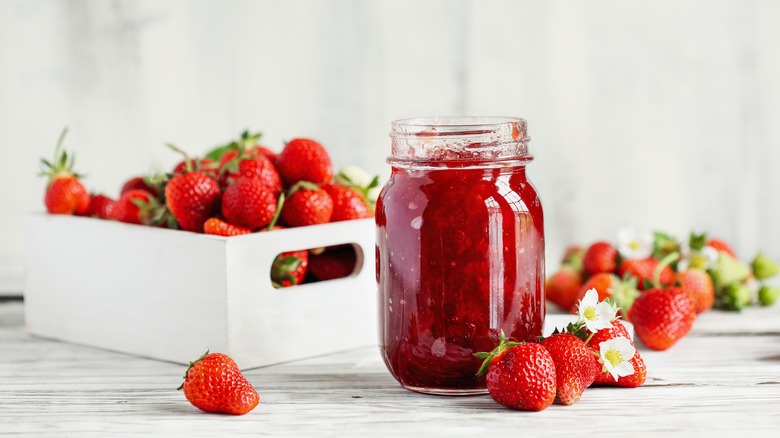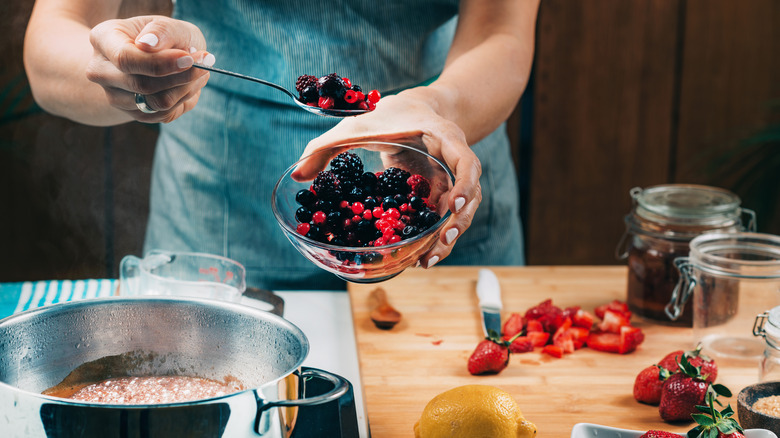How Ripe Should Fruit Be For Homemade Jam?
What's better than opening a jar of homemade strawberry jam on a cold winter day that was made at the height of summer, spreading it on your toast, and feeling like you're being transported to a warm, sunny day as you bite into it? From ruby red strawberries to deep blue Concord grapes, fruit should ideally be ripe and beautiful when made into jam. But can they be too ripe? Or too underripe?
Making jam is a multi-step process that takes time and patience. It involves sanitizing jars, creating the jam with fresh fruit, pectin, and sugar, and sealing the jar in a pot of boiling water, per The New York Times. Often used interchangeably, jams, jellies, and marmalades are quite different and distinct, according to the New York Times. Jelly is likely what you ate as a child in the form of a grape jelly with peanut butter sandwich. Jelly is made from fruit juice, sugar, and powdered pectin to create a gelatinous fruit spread, while jam is created from whole or sliced fruit and sugar with no pectin, although it can be added to increase the thickness. Only citrus fruit, such as oranges, are used to make marmalade.
When making jam, jelly, or marmalade, it's important to be well-versed in your fruit, including its pectin level, which will affect how it's made and how the finished product turns out, according to MasterClass.
A perfect level of ripeness
You know what fruit you want to transform into jam, but how do you know if it's the right level of ripeness?
Bon Appétit recommends using fruit that is ripe, but not past its peak ripeness. Otherwise, the jam will turn out to be a loose consistency. Overly ripe fruit will also not yield as flavorful a jam because it will have lost acid and pectin as it aged. The New York Times concurs that ripe fruit is best for jam, especially pieces that are ripe and juicy. But not too juicy because it will have less pectin than fruit that is slightly underripe.
The best time to get your fruit for your jam, per The New York Times? At the start of that fruit's harvest season just as it is becoming ripe. If for some reason your jam turns out too sweet, help to counter the sweetness with a little acid, advises Bon Appétit. A little lemon juice or a fruit vinegar can be just what it needs. Go ahead and preserve your favorite summer fruit and enjoy it spread on a bagel on a day when you need a reminder of warmer, sunnier days.

